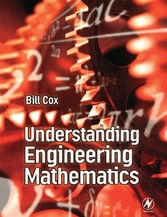Search and Find
Service
Number and Arithmetic
In this chapter we review the key features of elementary numbers and arithmetic. The topics covered are those found to be most useful later on.
Prerequisites
It will be helpful if you know something about:
• simple types of numbers such as integers, fractions, negative numbers, decimals
• the concepts of ‘greater than’ and ‘less than’
• elementary arithmetic: addition, subtraction, multiplication and division
• powers and indices notation, 23 = 2 × 2 × 2, for example
• how to convert a simple fraction to a decimal and vice versa
Objectives
In this chapter you will find:
• different types of numbers and their properties (particularly zero)
• the use of inequality signs
• highest common factors and lowest common denominators
• manipulation of numbers (BODMAS)
• handling fractions
• factorial (n!) and combinatorial nCror(rn)) notation
• powers and indices
• decimal notation
• estimation of numerical expressions
Motivation
You may need the material of this chapter for:
• numerical manipulation and calculation in engineering applications
• checking and using scientific formulae
• illustrating and checking results used later in mathematics
• statistical calculations
• numerical estimation and ‘back of an envelope’ calculations
A note about calculators
Calculators obviously have their place, particularly in applied mathematics, numerical methods and statistics. However, they are very rarely needed in this chapter, and the skills it aims to develop are better learnt without them.
1.1 Review
1.1.1 Types of numbers
A. For each number choose one or more descriptions from the following: (a) integer, (b) negative, (c) rational number (fraction), (d) real, (e) irrational, (f) decimal, (g) prime.
(i) is done as an example
(i) −1(a, b, c, d)
(ii) 2
(iii) 0
(iv) 7
(v) 5
(vi) 34
(vii) 0.73
(viii) 11
(ix) 8
(x)
(xi) −0.49
(xii) π
B. Which of the following descriptions apply to the expressions in (i)−(x) below?
(a) infinite
(b) does not exist
(c) negative
(d) zero
(e) finite
(f) non-zero
(i) 0 × 1(d, e)
(ii) 0+1
(iii) 0
(iv) 2−0
(v) 02
(vi) 0 − 1
(vii) 0
(viii) ×0+30
(ix) 30
(x) 2
1.1.2 Use of inequality signs
Express symbolically:
(i) x is a positive, non-zero, number (x > 0)
(ii) x lies strictly between 1 and 2
(iii) x lies strictly between −1 and 3
(iv) x is equal to or greater than −2 and is less than 2
(v) The absolute value of x is less than 2.
1.1.3 Highest common factor and lowest common multiple
A. Express in terms of prime factors
(i) 15 (= 3 × 5)
(ii) 21
(iii) 60
(iv) 121
(v) 405
(vi) 1024
(vii) 221
B. Find the highest common factor (HCF) of each of the following sets of numbers
(i) 24, 30 (6)
(ii) 27, 99
(iii) 28, 98
(iv) 12, 54, 78
(v) 3, 6, 15, 27
C. Find the lowest common multiple (LCM) of each of the following sets of numbers
(i) 3, 7 (21)
(ii) 3, 9
(iii) 12, 18
(iv) 3, 5, 9
(v) 2, 4, 6
1.1.4 Manipulation of numbers
Evaluate
(i) 2 + 3 − 7 (= −2)
(ii) 4 × 3 ÷ 2
(iii) 3 + 2 × 5
(iv) (3 + 2) × 5
(v) 3 + (2 × 5)
(vi) 18 ÷ 2 × 3
(vii) 18 ÷ (2 ×3)
(viii) −2 − (4 − 5)
(ix) (4 ÷ (−2)) × 3 − 4
(x) (3 + 7) ÷ 5 + (7−3) × (2 − 4)
1.1.5 Handling fractions
A. Simplify
(i) 6(=23)
(ii) 9
(iii) 3×47
(iv) 5×314
(v) 4÷45
(vi) 2+13
(vii) 2−13
(viii) 15−73
(ix) +12+13
(x) 3−34+18
B. If the numbers a and b are in the ratio a : b = 3 : 2 and a = 6, what is b?
1.1.6 Factorial and combinatorial notation – permutations and combinations
A. Evaluate
(i) 3! (=6)
(ii) 6!
(iii) !23!
(iv) !9!?3!
B.
(i) Evaluate (a) 3C2 (= 3) (b) 6C4 (c) 6P3
(ii) In how many ways can two distinct letters be chosen from ABCD?
(iii) How many permutations of the letters ABCDE are there?
1.1.7 Powers and indices
A. Reduce to simplest power form.
(i) 2324(=27)
(ii) 34/33
(iii) (52)3
(iv) (3 × 4)4/(9 × 23)
(v) 162/44
(vi) −6)2(−32)3
(vii) (−ab2)3/a2b
(viii) 2(12)−3
B. Express in terms of simple surds such as...
All prices incl. VAT














